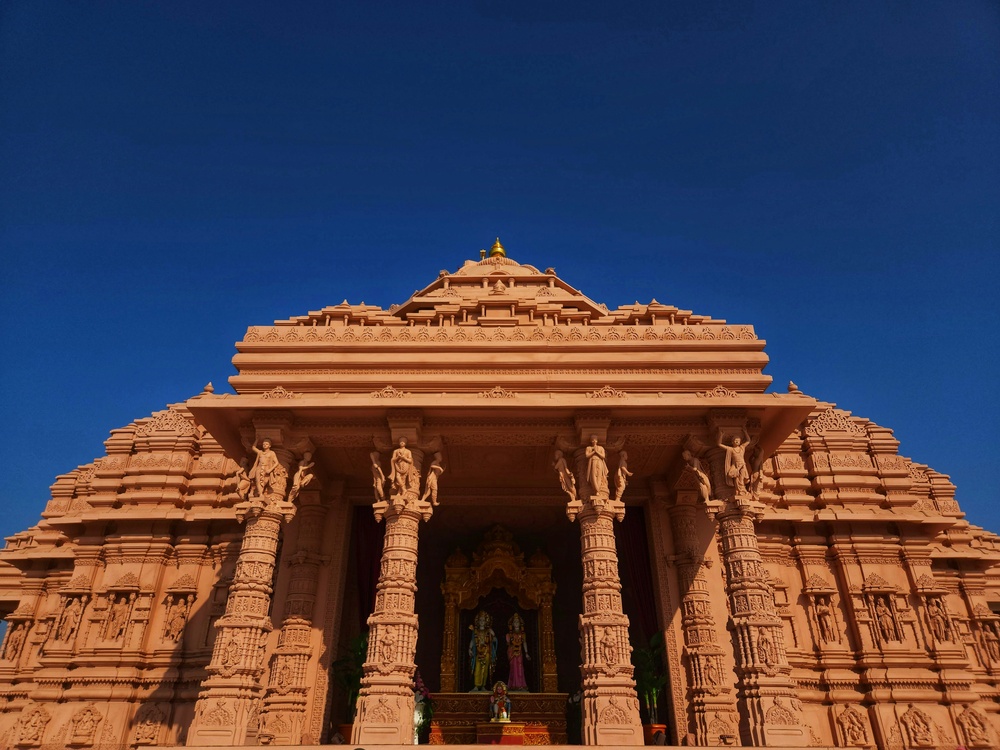Ayodhya Visiting Places: A Complete Guide to the Land of Lord Ram
Ayodhya, the ancient city located on the banks of the Sarayu River in Uttar Pradesh, is known as the birthplace of Lord Ram and holds a special place in Hindu mythology. Steeped in spirituality, faith, and history, Ayodhya attracts millions of pilgrims and travellers each year who wish to witness its divine aura, ancient temples, and sacred ghats. Here is a complete guide to Ayodhya visiting places to help you plan your spiritual journey to the Land of Lord Ram.
1. Ram Janmabhoomi
The most significant and revered site in Ayodhya is Ram Janmabhoomi, believed to be the exact birthplace of Lord Ram. The grand Ram Mandir is under construction here, and devotees from all over the world visit this holy site to offer prayers and seek blessings. The spiritual energy and the chants of Ram Naam create a powerful experience that remains etched in the hearts of visitors.
2. Hanuman Garhi
Hanuman Garhi is a must-visit among Ayodhya visiting places. This 10th-century temple is dedicated to Lord Hanuman and is located near Ram Janmabhoomi. It is believed that Lord Hanuman resided here to protect Ayodhya. Visitors need to climb around 76 steps to reach the temple, where an idol of Hanuman with his mother Anjani is worshipped. The temple offers a panoramic view of the city and is always bustling with devotees.
3. Kanak Bhawan
Kanak Bhawan is one of the most beautiful temples in Ayodhya, dedicated to Lord Ram and Goddess Sita. It is said to have been gifted to Sita by Kaikeyi after her marriage. The temple houses beautifully adorned idols of Ram and Sita with golden crowns. The intricate designs, colourful walls, and peaceful environment make it a favourite among pilgrims.
4. Nageshwarnath Temple
This ancient temple is dedicated to Lord Shiva and is believed to have been established by Kush, the son of Lord Ram. Nageshwarnath Temple holds special importance during Shivratri when grand celebrations are organised here. The temple’s ancient architecture and spiritual significance attract both devotees and history lovers.
5. Treta Ke Thakur
Treta Ke Thakur temple is located on the banks of Sarayu River and is said to be the site where Lord Ram performed the Ashwamedha Yagna. The temple houses beautiful black stone idols of Ram, Sita, Lakshmana, Bharat, Shatrughna, and Hanuman. The temple opens only once a year on Ekadashi after Diwali, making it a rare and special visit for devotees.
6. Sita Ki Rasoi
Situated near Ram Janmabhoomi, Sita Ki Rasoi is believed to be the kitchen of Goddess Sita. Today, it is a temple that showcases symbolic utensils and idols of Sita, Ram, Lakshmana, Bharat, and Shatrughna. It offers a glimpse into the ancient royal household traditions of Ayodhya and is an interesting stop during your temple visits.
7. Guptar Ghat
Guptar Ghat is located on the banks of the Sarayu River and is believed to be the place where Lord Ram took Jal Samadhi to return to Vaikuntha. Devotees visit this ghat to take a holy dip, meditate, or attend the serene evening aarti. The ghat has temples dedicated to Lord Ram and Chakrahari Vishnu, making it an important spiritual destination in Ayodhya.
8. Mani Parbat
Mani Parbat is a small hillock in Ayodhya offering stunning views of the city. According to legends, it is a part of the Sanjeevani mountain carried by Lord Hanuman. The hill has a Buddhist stupa and a temple at the top. It is an ideal spot for nature lovers who also wish to experience Ayodhya’s spiritual side.
9. Tulsi Smarak Bhawan
Tulsi Smarak Bhawan is dedicated to Goswami Tulsidas, who composed the Ramcharitmanas. This cultural complex has a research library, museum, and Ram Katha Sangrahalaya that depicts stories from Ramayana through paintings and models. The bhawan also organises Ramleela performances, making it a perfect place to learn about Ayodhya’s literary and cultural history.
10. Dashrath Mahal
Located near Hanuman Garhi, Dashrath Mahal is believed to be the residence of King Dashrath, father of Lord Ram. The palace has now been converted into a temple with beautifully decorated idols of Ram, Sita, Lakshmana, Bharat, and Shatrughna. Its grand architecture, colourful decorations, and devotional ambience make it one of the most visited Ayodhya visiting places.
Best Time to Visit Ayodhya
The ideal time to visit Ayodhya is between October and March when the weather is pleasant and festivals like Ram Navami, Diwali, and Kartik Purnima are celebrated with grandeur. These months also make temple visits and river aarti experiences more comfortable.
How to Reach Ayodhya
- By Air: Ayodhya has a newly inaugurated airport connected to major cities.
- By Train: Ayodhya Railway Station is well-connected to Delhi, Lucknow, and Varanasi.
- By Road: Regular buses and taxis are available from nearby cities like Lucknow and Faizabad.
Conclusion
These Ayodhya visiting places reflect the city’s spiritual essence, rich cultural heritage, and timeless historical significance. Whether you are a pilgrim seeking divine blessings, a history enthusiast, or a traveller exploring India’s spiritual roots, Ayodhya promises an unforgettable journey into faith, devotion, and ancient legends. Plan your trip to this sacred land of Lord Ram and immerse yourself in its eternal spiritual aura.


Leave a Reply
Want to join the discussion?Feel free to contribute!